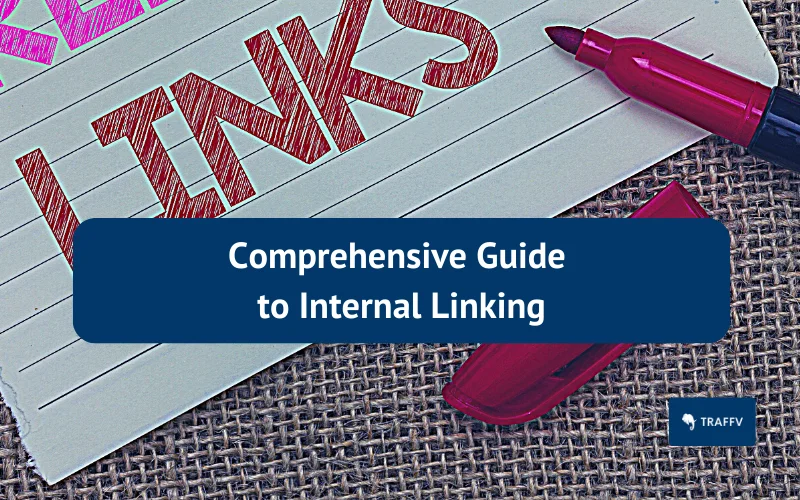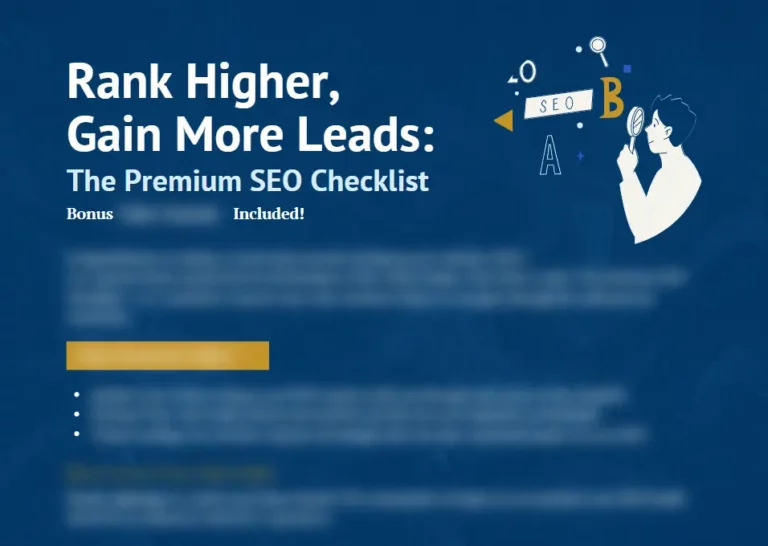Are you harnessing the full potential of your website’s internal links?
Internal linking is a powerful SEO strategy often overlooked by website owners.
In this comprehensive guide, we will explore the ins and outs of internal linking, from understanding its purpose to implementing best practices and avoiding common mistakes.
Empower your website’s SEO and enhance user experience by mastering the art of internal linking.
TL:DR
- Internal links are essential for optimizing user experience and SEO performance.
- External and internal links have distinct purposes, impacts on SEO, and link equity distributions.
- Best practices such as anchor text selection, strategic placement of internal links & balancing quality/quantity can help optimize website’s linking strategy for improved rankings & user experience.
Understanding Internal Links
Internal links are hyperlinks that connect internal pages within the same domain, directing users and search engines through your website.
They serve a dual purpose: guiding users to relevant content and helping search engine crawlers discover and index your site’s pages with internal links pointing to them.
By strategically linking relevant pages on your site, you create a logical and user-friendly site structure that improves user experience and SEO performance.
This is why internal links should never be overlooked.
Importance for User Experience
User experience plays a crucial role in the success of your website, and internal links are vital for providing a smooth navigational experience.
Strategic internal linking guides users through your site, recommending relevant content and encouraging them to explore further.
By providing easy access to related content, internal links help users find valuable information without returning to search engines.
This leads to longer page sessions, increased brand awareness, and ultimately, higher conversion rates.
External Links vs. Internal Links
While internal links connect pages within the same domain, external links, also known as outbound links, point to content on other websites.
External links can boost your website’s authority and provide additional information or reference sources for your readers.
However, the primary focus of this guide is on internal links and their role in your website’s SEO success.
Key Differences
The key differences between external and internal links lie in their purpose, impact on SEO, and the way they distribute link equity.
While external links direct users to pages on other websites and improve your site’s visibility in SERPs, internal links help search engines discover and index your site’s pages, understand your site’s hierarchy, and distribute link equity across your website.
By understanding these differences, you can optimize your internal linking strategy to improve your site’s SEO performance.
The Role of Internal Links in SEO
Internal links play a pivotal role in SEO by influencing site architecture, crawlability, and link equity distribution.
A well-executed internal linking strategy can improve your site’s search engine rankings and enhance user experience by guiding users to relevant content.
Site Architecture and Crawlability
Internal links contribute to your site’s architecture and crawlability by helping search engines discover and index your site’s pages.
A well-structured internal linking strategy allows search engine spiders to easily navigate your site, ensuring that all your pages are discovered and indexed.
To improve your site’s SEO, it’s important to add internal links where relevant and beneficial for your users.
This, in turn, leads to improved visibility and higher rankings in search engine results pages (SERPs).
Distributing Link Equity
Internal links are essential for distributing link equity, or “link juice,” across your website, improving the ranking potential of individual pages and your overall domain.
By strategically linking related pages and directing link equity to important pages, you can enhance your site’s SEO performance and increase its visibility in SERPs.
This can result in increased organic traffic, higher conversion rates, and ultimately, more revenue for your business.
Best Practices for Implementing Internal Links
To maximize the benefits of internal linking, it’s crucial to implement best practices that focus on anchor text selection, strategic placement, and balancing quantity and quality of internal links.
By following these best practices, you can ensure that your internal linking strategy is both user-friendly and search engine-friendly.
This will help to improve the overall user experience on your website, as well as helping to boost your revenue.
Anchor Text Selection
The anchor text, or clickable text, of your internal links should be descriptive, relevant, and include keywords to signal context and improve SEO.
Using appropriate anchor text helps search engines understand the content of the linked page, which can result in better indexing and higher SEO rankings for your site’s pages.
Avoid using generic phrases like “click here” or “learn more,” and instead opt for descriptive and relevant anchor text that accurately represents the linked content.
Strategic Placement
The placement of your internal links should prioritize relevance and user experience, ensuring that links are positioned where they provide the most value.
Avoid overloading your content with internal links, as this can make it difficult for users to read and negatively impact your site’s SEO performance.
Instead, focus on strategically placing internal links where they add value and guide users to related content.
This will help to improve the user experience and ensure that your content is properly indexed by search engines.
Balancing Quantity and Quality
Striking a balance between the quantity and quality of your internal links is essential for maintaining a user-friendly site structure and optimizing SEO performance.
One question that often arises is how many internal links should be included on a page.
Overloading your site with too many internal links can lead to a cluttered appearance and hinder user experience, while too few high-quality links can impair your site’s visibility in search engine results.
Aim for a balanced internal linking strategy that prioritizes the relevance and context of your contextual links while avoiding excessive linking.
Common Internal Linking Mistakes to Avoid
As with any SEO strategy, there are common mistakes to avoid when implementing your internal linking structure.
By being aware of these pitfalls and taking steps to prevent them, you can optimize your internal linking strategy and ensure your site’s SEO performance remains strong.
Overloading with Links
Overloading your pages with too many internal links, including broken internal links, can result in a cluttered appearance, which can negatively impact user experience and SEO performance.
To avoid this issue, focus on strategically placing internal links where they add value and guide users to relevant content, rather than overwhelming your pages with excessive links.
By carefully selecting which internal links to include, you can ensure that your pages are easy to navigate.
Inconsistent Linking Structure
Inconsistent linking structures can confuse users and search engines, hindering site navigation and SEO performance.
To avoid this issue, ensure that your internal links are organized in a logical and consistent manner.
This will provide a seamless navigational experience for users and help search engines effectively crawl and index your site’s pages.
Tools and Techniques for Internal Link Analysis
Optimizing your internal linking strategy requires regular analysis and monitoring.
Fortunately, there are various tools and techniques available to help you analyze your site’s internal links, identify issues, and suggest optimizations.
Let’s explore some of the most popular tools for internal link analysis.
Semrush
Semrush offers a comprehensive site audit tool that allows you to analyze your site’s internal links, identify issues, and suggest optimizations.
With its in-depth reports on your site’s internal link structure and link equity distribution, Semrush can help you optimize your internal linking strategy, improve your site’s SEO performance, and increase its visibility in search engine results pages.
By using Semrush’s site audit tool, you can ensure that your internal links are secure.
Yoast SEO Plugin
The Yoast SEO Plugin is a popular WordPress plugin that assists in managing internal links by providing suggestions, monitoring link counts, and identifying orphaned content.
With its user-friendly interface and powerful internal linking features, the Yoast SEO Plugin can help you optimize your site’s internal linking strategy, enhance user experience, and boost your site’s SEO performance.
Expert-Driven Internal Linking Strategy
A well-executed internal linking strategy is crucial for improving your website’s SEO performance and enhancing user experience.
Hiring an SEO agency to assist with your internal linking strategy can help you identify areas for improvement, develop effective internal linking strategies, and monitor your site’s performance to ensure that your internal linking efforts are delivering the desired results.
Now that you’re equipped with the knowledge and tools necessary to master internal linking, it’s time to take action and elevate your website to new heights.
Frequently Asked Questions
What is internal linking?
Internal linking is the practice of using hyperlinks on your website to link from one page to another, allowing users and search engines to easily navigate and find content within the same domain.
An example of internal linking could be a blog post that links to specific pages or product categories in the main navigation. This helps to create an engaging user experience while also improving the website’s search engine rankings.
What is the use of internal linking on SEO?
Internal linking is an important SEO strategy for improving your website’s ranking in search engine results pages. By creating links between your web pages, you create a hierarchy of importance, helping crawlers understand the topic of each page and navigate your site better. This can result in higher rankings and more organic traffic.
What are some best practices for implementing internal links?
In order to create effective and efficient internal links, it is important to take into consideration factors such as anchor text selection, placement of links, balanced ratio of quantity and quality, avoiding overloading with links, and establishing a consistent linking structure.
What tools are available for internal link analysis?
When it comes to internal link analysis, you can leverage a variety of tools such as Google Search Console, Ahrefs, Moz, SEMrush, Screaming Frog, and SEO Powersuite Website Auditor.
With these tools, you can identify weak spots in your internal linking structure and address them accordingly.




